Why Wallis?
We wanted to experience something different from Tonga and Fiji, geographically and culturally. We also heard there were some kiteboarding spots.
Where is Wallis?
The island group sits in the South Pacific around 13º 17′ South and 176º 10′ West. It lies about 350 miles north-east of Fiji and 250 miles west of Samoa. Mata-Utu is the administrative centre for Wallis and Futuna, its sister island group 150 miles to the southwest.
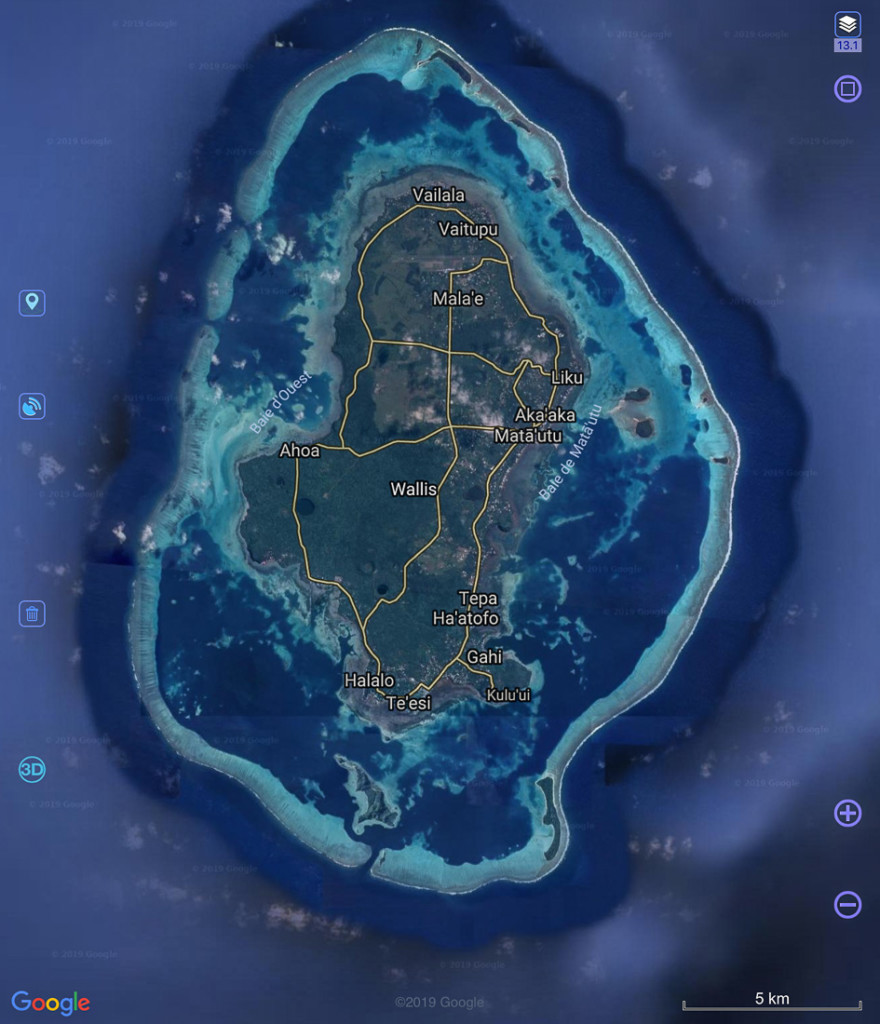
Wallis is a volcanic island approximately 76 sq. km. in area, with 20 uninhabited islets. A barrier reef surrounds the group and conveniently has a few passes making it possible to navigate inside the reef.
Some History
The islands had settlements going back to 1400 B.C.E. The Tongans invaded and ruled Wallis for a period in the 15th century. Their influence on Wallis’s culture and language is notable. By contrast, Futuna was occupied by Samoans and has a different culture and language.
The British were the first Europeans to visit Wallis in 1767 and named the island after explorer Samual Wallis. French missionaries arrived in 1837, successfully converting the population to Catholicism. After a call from the missionaries for protection from a revolt, France declared the islands a protectorate in 1842.
Between 1888 and 1961, the islands were administered by territorial government seated in New Caledonia. During WWII, the Americans had a base in Wallis and built roads and an airport. They also influenced the culture here in some quirky ways, more on that later.
In 1961, Wallis and Futuna became a French Overseas Territory, removing governmental ties to New Caledonia. Since 2003, Wallis and Futuna has been a French Overseas Collectivity.
Economy
Copra was the main export until the 1930s when a rhinoceros beetle infestation wiped out the coconut palms. Today, government jobs represent over 70% of paid jobs in Wallis and Futuna. That’s essentially how the French government supports the community. In many cases a family will a have a member or two working for the public sector, earning 250,000 to 600,000 Pacific Francs (~$25,000-$60,000USD), sharing their income amongst their family. Wallisians and Futunians don’t have a rent to pay and grow most of their food so this income is usually enough. Unfortunately, many are not good with managing their finances and often heavily in debt.
Expats earn a lot more that they would in France, or in any overseas territory. Wallis and Futuna is the most remote French territory. To compensate the government employees (administration, teachers/academy, hospital, etc.) for the remoteness, they are paid the highest bonuses anywhere. Along with the high salaries are many other advantages including installation bonuses and relocation costs/container transportation to/from previous/next location. For those reasons, WF is the Mecca of French Government expat workers.
Population
According to a 2018 census, the population was 8,333 in Wallis and 3,225 in Futuna. There are approximately 25,000 Wallisians/Futunians living in New Caledonia (9% of the population) with no other important WF community abroad. WF has lost 20% of its population in 15 years.
The languages spoken are French and Wallisian, which is similar to other Polynesian languages. As an example, “Malo” meaning thank you is commonly used, just as in Tonga.
Farming and Fishing
Coconut palms are again plentiful. Introduced crops include breadfruit, bananas, taro, cassava, yams, papayas, lemons, limes and mangoes (the latter was out of season during our stay). We didn’t see much livestock, just sheep, goats and pigs. Fishing is a supposed to be a major source of protein, however little makes it to the stores. There is no ciguatera in the reef fish in Wallis so locals eat anything they can catch. Fish stocks were quite depleted.
Our Sail to Wallis
We had a reasonable two-day sail from Tonga, covering 355 miles. About 60 miles from Wallis, we were going to traverse a seamount so we put the lines in the water for a couple hours. We had five strikes but didn’t land one fish. Four lures were also lost in the fight. Guess our luck ran out after catching that magnificent sailfish in Vava’u. Can’t expect to land them all!
At daybreak, we navigated Passe Honikulu into the lagoon.
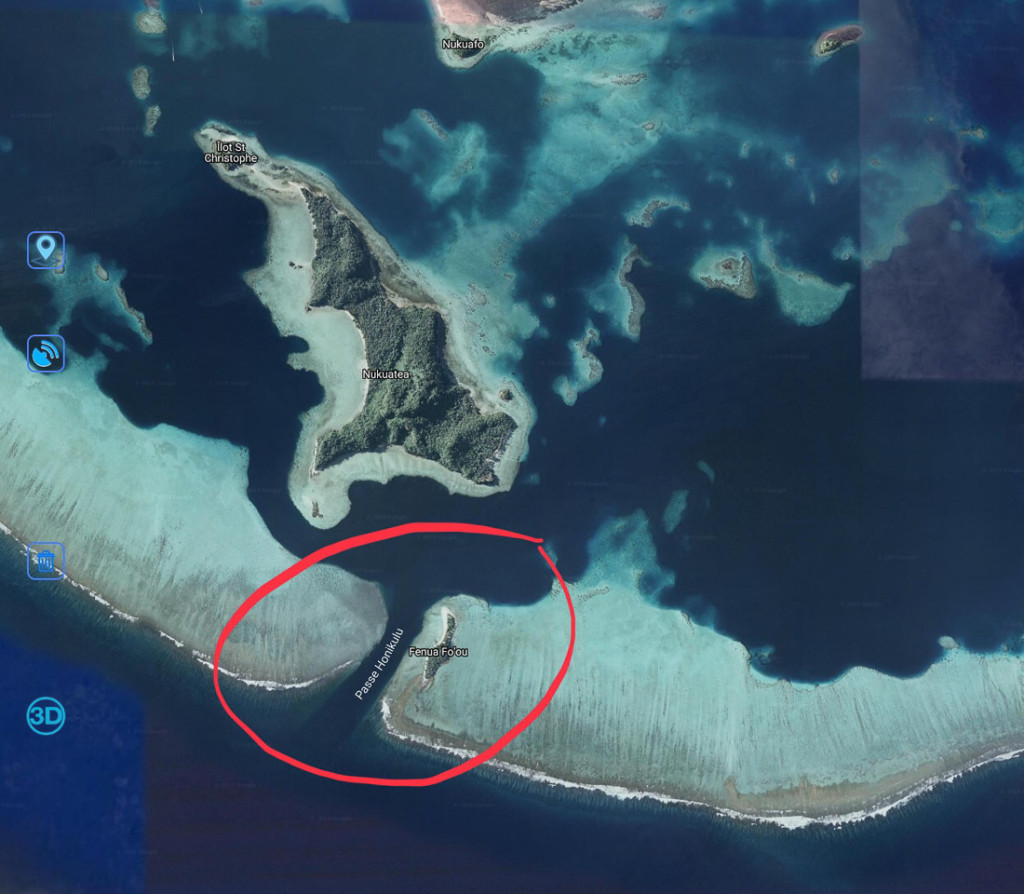
It was near slack tide, but there was still about 2 knots of current flowing against us. The pass is plenty wide and well marked. Monty stood on watch on the bow while I steered Whistler through the channel. We now use head sets to communicate which eliminates (most of) the yelling! Many cruisers refer to the headsets as “marriage savers”!
After navigating around the lagoon, we arrived at Mata-Utu. We anchored close to the suggested anchorages indicated on our Navionics chart. Minutes later, a port official arrived in a skiff and informed us, in French, that we had to move. A new fibre-optic cable had recently been laid across the bay and anchoring anywhere south of the big wharf was a no-go. The cable was indeed showing on the updated chart on Monty’s Navionics App on the iPad. He told us we could anchor north of the big yellow buoy off the main wharf so we immediately moved. It was not a good anchorage, with considerable fetch at high tide, shallow areas of coral and a nasty chop bouncing off the big wharf.
Check-In
We went ashore in our dinghy and checked-in with Customs. Whistler was the 12th boat to check-in to Wallis this year. Last year, about 35 yachts visited Wallis, most stopping on their way west from Samoa to Fiji or Vanuatu. Given the islanders speak French, many of the visiting yachts were French flagged.
ATM and Shopping
We walked around Mata-Utu and asked for directions to the ATM. Jean-Claude, at expat from New Caledonia selling packaged lunches from a road-side stand, told us how to find the ATM but he warned it was a ways on foot.
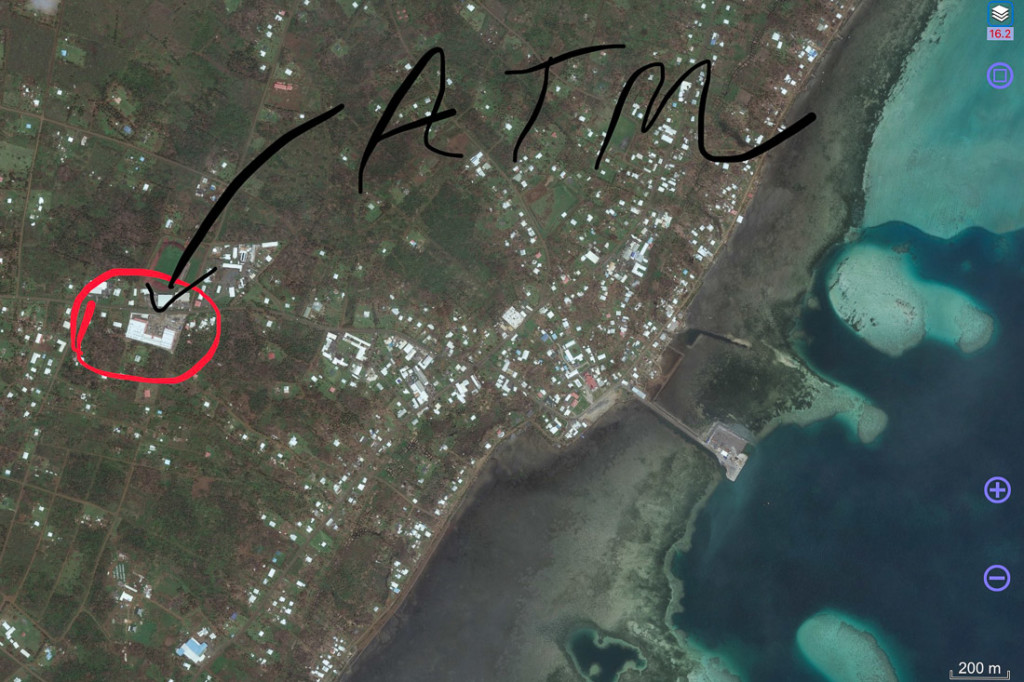
I became discouraged walking there, as it was hot, my knee had been acting up and I was wearing inappropriate footwear (flip-flops). I stopped along the road to wait while Monty continued on. I was getting a bit concerned as he was gone for an hour. He finally returned, a passenger in an SUV. He had hitched a ride with an older French woman. (We have to be careful who we call older!)
Monty had been unsuccessful getting any local currency. The ATM was out of money. After waiting in a line for half an hour, someone told him to go inside to see a bank teller. Ah, there was a bank! But unfortunately, the bank card declined a withdrawal. So here we were in Wallis with almost no local currency (thanks to Keli and Jeremy on S/Y Marilyn for the Pacific Francs we had) and credit cards were not widely accepted. We chatted again with Jean-Claude. He could not understand why we could not withdraw money. Concerned about our dilemma, he gave us a boxes of hot chicken stir-fry, rice and fruit salad! He refused to take anything for it.
While we were eating our “free lunch” back on Whistler, we thought about what to do. Calling the bank in Canada would be useless. We had nothing to lose by trying another debit card, so we marched back, both of us this time, in better footwear and inserted my card into the ATM. We tried withdrawing a lower amount, equivalent to about $400 Cdn. Fortunately, it worked this time. What a relief!
We then explored the SEM Supermarche next door. We had been warned Wallis was expensive. We were amazed at the variety of goods and the prices!

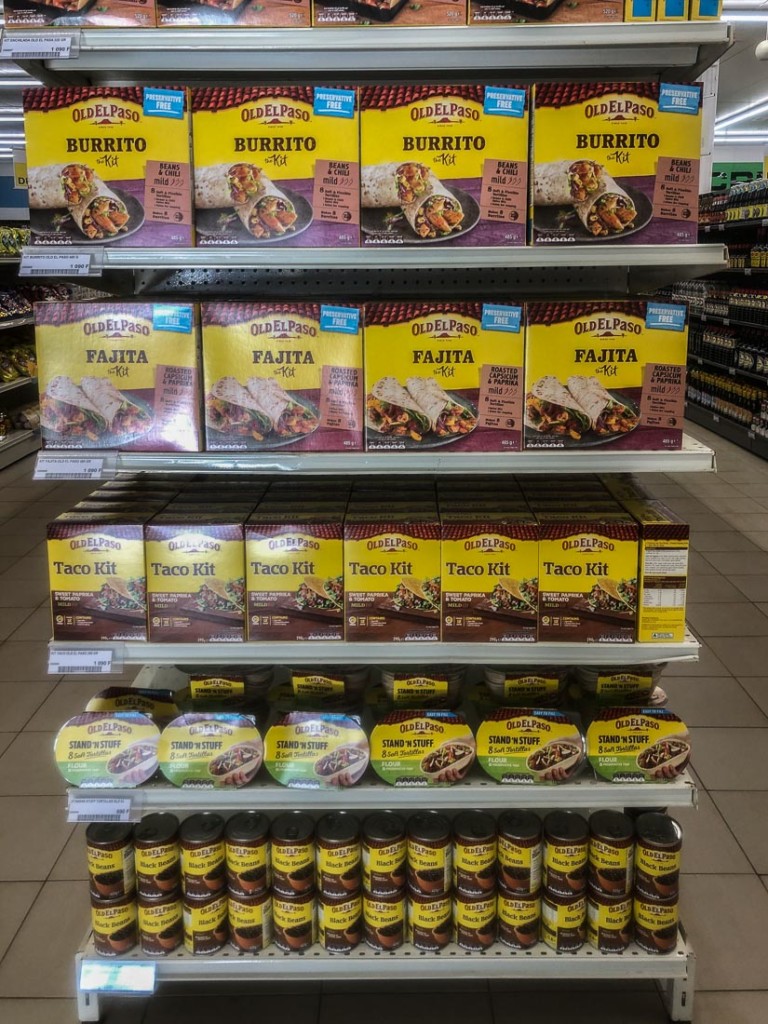
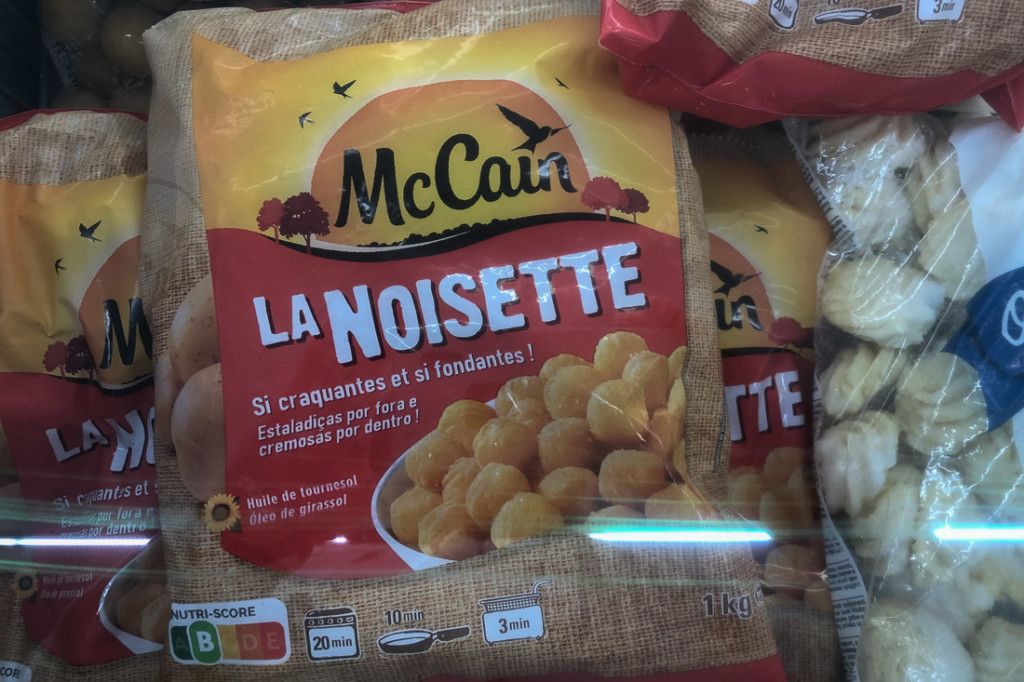
Produce was almost all imported and very expensive. As an example, imported tomatoes and peppers were about $20USD/kg.
It is funny the things that make our mouths water when we have been away from a well-stocked grocery store for a while. We picked out a couple New Zealand ribeye steaks, peppercorn sauce, canned mushrooms, French cheese, baguettes and ham.
Internet
Our last mission was to buy a SIM Card ($50 USD) and 3GB of internet data (another $50USD). The Telecommunications Office was with the Post Office, close to the wharf. Wallis does have good 4G internet, so the new cable must be doing its job. They even had free wifi outside around post office, though the service was often turned off on weekends and holidays.
More Check-In
A young couple on a 32 foot sloop called Scoot arrived from Samoa that afternoon and anchored next to us. We found out from them that we also needed to check in with the Gendarmes (Police) who stamp passports. It had been a while since we had read Noonsite, where all that check-in information is provided. Off we went back to town to finish our check-in business.
We also stopped in to see the port official and were advised we could not continue to anchor near the wharf. A big supply ship was expected any time and we might be in its way. The anchorage was so uncomfortable at high tide, we wanted to move in any case.
Trouble in Paradise!
As we were pulling up our anchor, I could not move the wheel to starboard. We quickly re-dropped the anchor again and started to investigate why the steering was blocked.
The port officials had to be notified we could not move. Monty rushed in by dinghy to see them before closing. Using his best grade 10 French, explained we could not move the boat. (Monty’s Grade 10 teacher said he would pass Monty if he promised not to come back the following year!) The port manager kindly offered to arrange divers to come out to the boat the next morning and would tow our boat to another anchorage if we could not fix the steering. They were serious.
When Monty got back to the boat, we called Scoot to ask if they might be able to help. We had met Kat in 2015 in Fulaga, Fiji, when she was solo-sailing around the South Pacific. She had spent a chunk of her childhood circumnavigating on a sailboat with her parents. George, her boyfriend, was, let’s just say, handy. Tired as they were from the passage, they kindly offered to come over and helped us diagnose the problem. To discern if the problem was under the water, they worked with Monty to disconnect the rudders. Thankfully they would move freely so we didn’t need divers. The stern and cockpit lockers were all emptied in order to follow all the components of the steering back from the wheel to the rudders. Monty finally located the culprit, a loose and, now, bent screw at the junction box in the stern. It was not easy to access but Monty was able to remove and replace it. The steering was freed! So fortunate that this problem did not arise on passage!
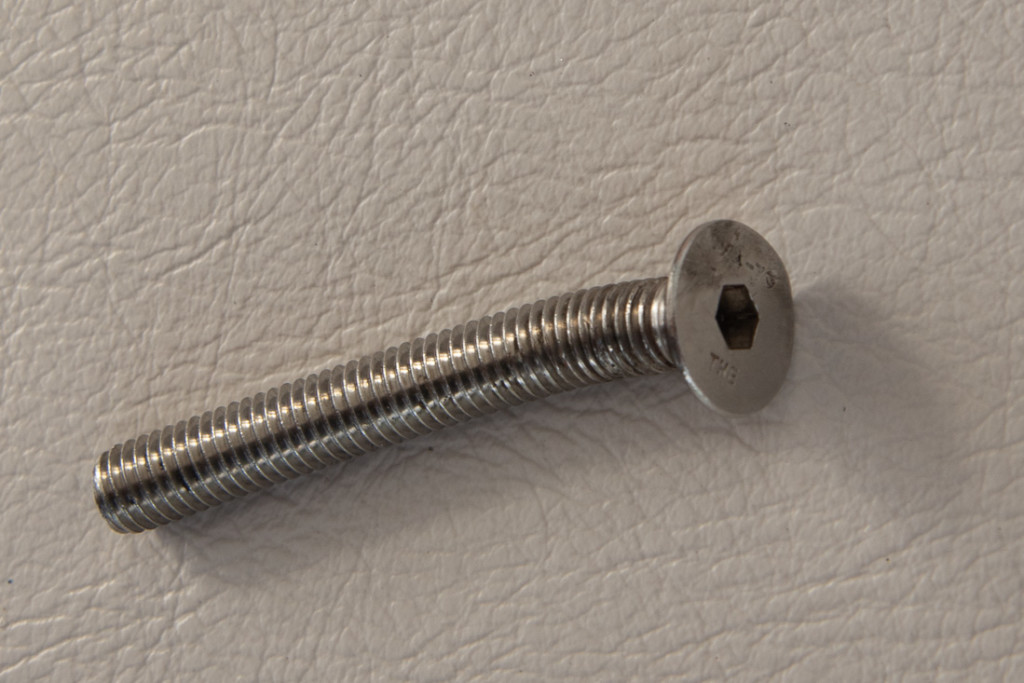
Early the next morning, I drafted a note in French to let the port authorities know we had solved the steering problem. Monty dinghied in to see the officials again when the office opened. Clearing his throat with a “Hm, hm…” he did his best to read my note to the port office clerks. They smiled and had a giggle but the message was understood.
Fugalei Anchorage
We moved Whistler over to the islets east of Mata-Utu. A Kiwi yacht and Scoot were anchored with us. We went over on a couple occasions to say hello to the other yacht, but noticed a middle-aged man standing nude on the deck, making no discernible attempt to cover up as we approached. Preferring to avoid an embarrassing moment, we retreated. Imagine that!
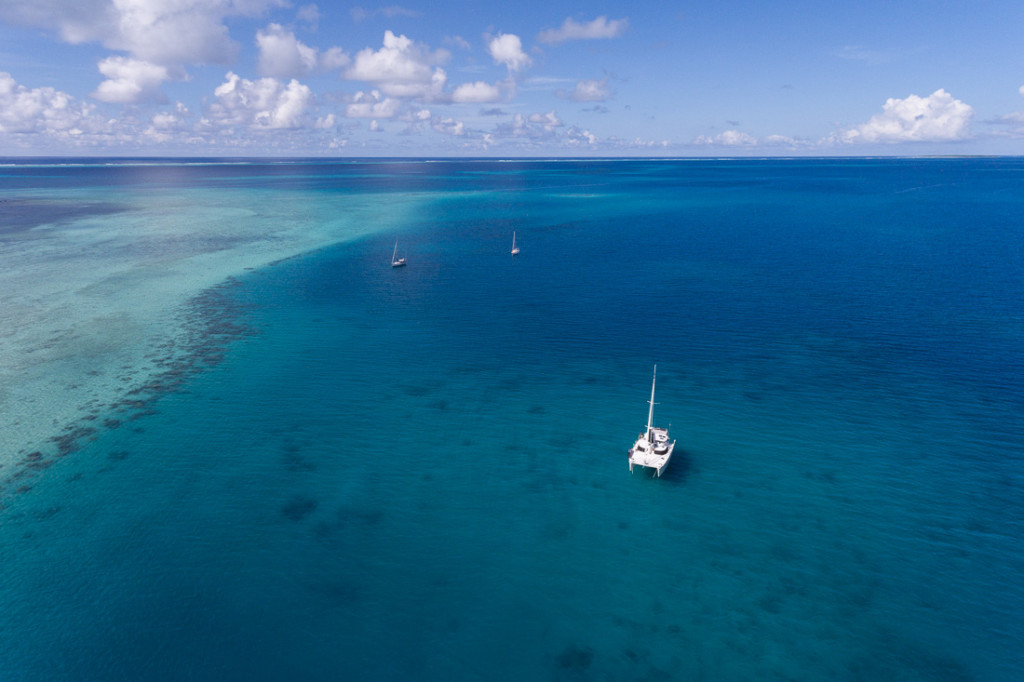
The Weather
For the first ten days, the weather was very changeable, with numerous troughs and squalls passing through.
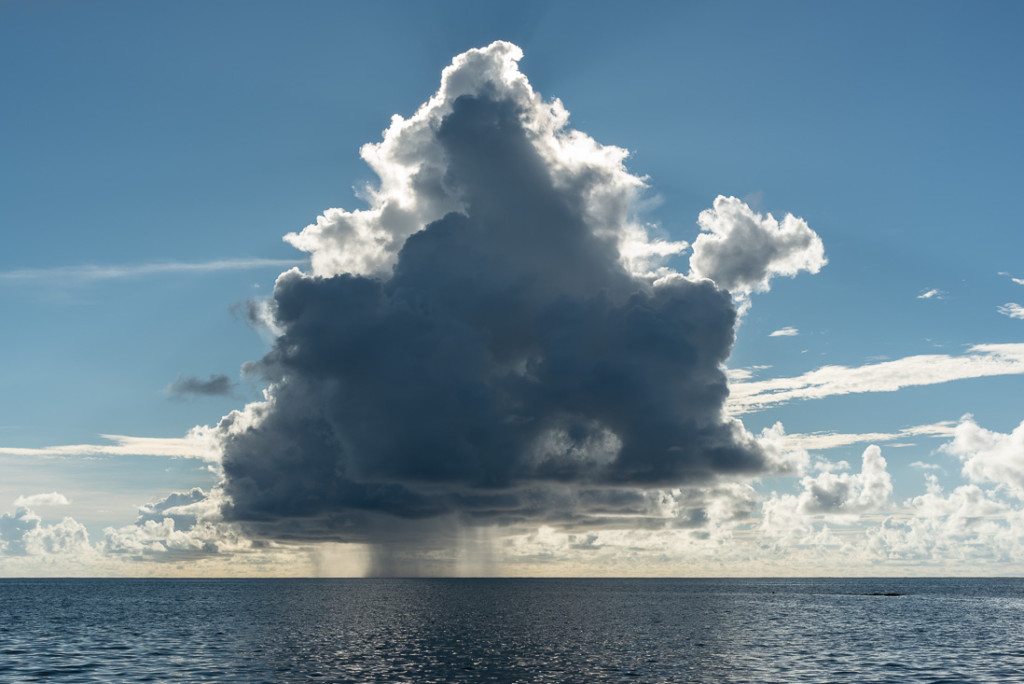
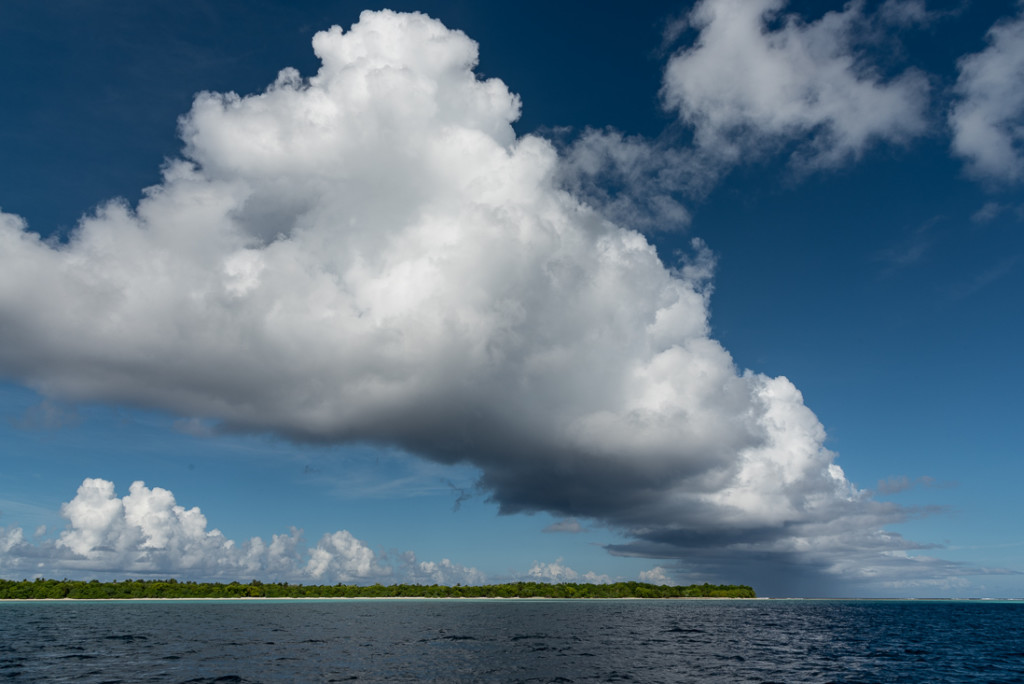
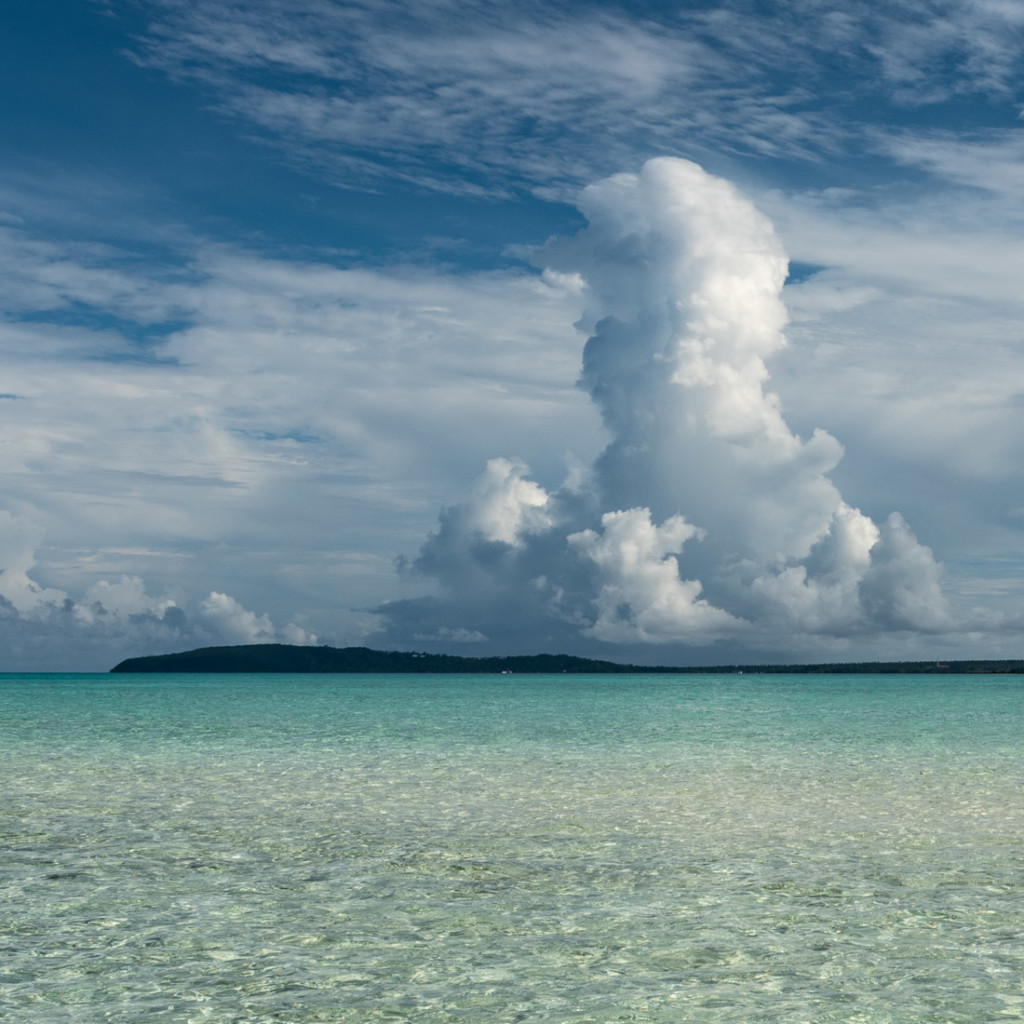
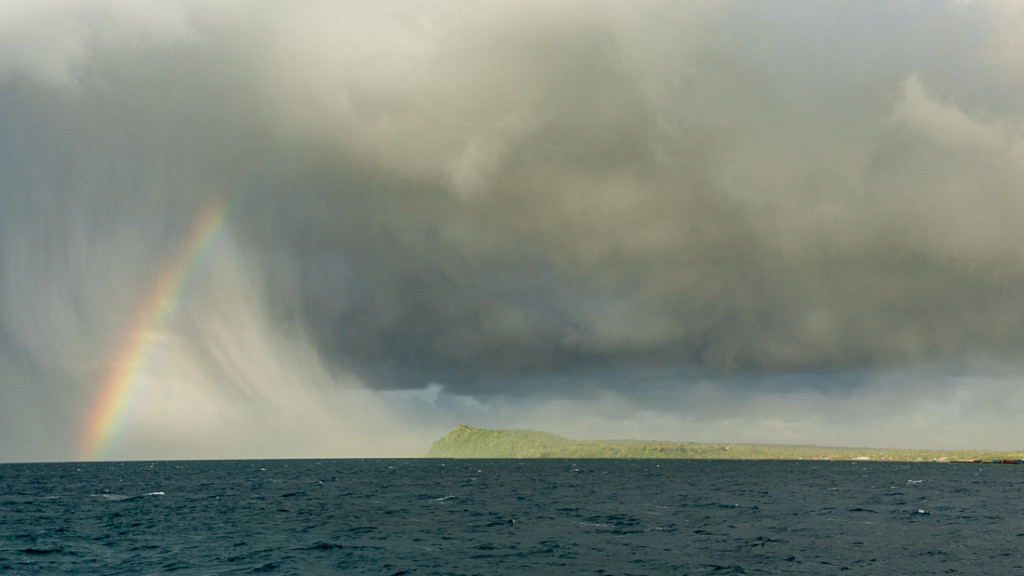
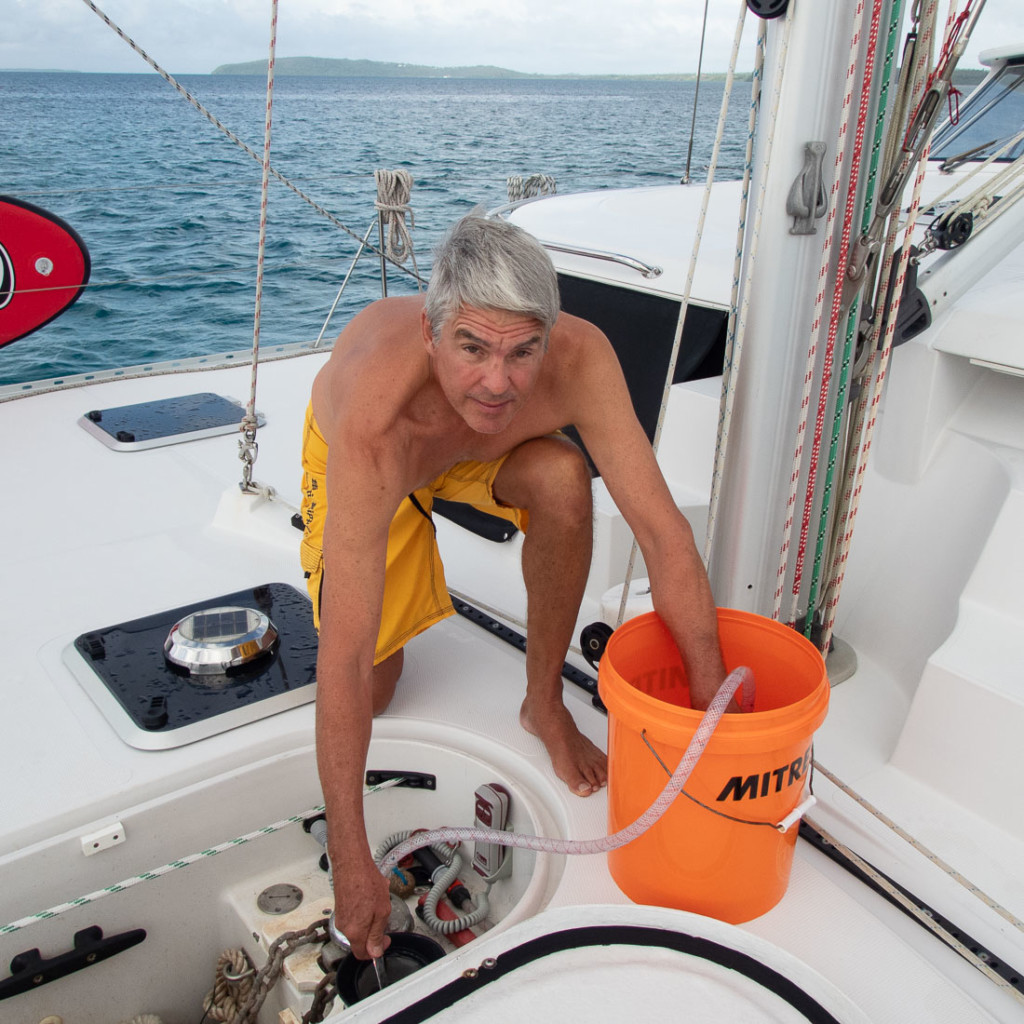
We were getting grumpy with all the poor weather. We were wondering if we would ever get kiting. Our main form of exercise was opening and closing the hatches! The weather didn’t look any better in Fiji or Tonga. Monty was having those “I want to sell the boat!” moments!
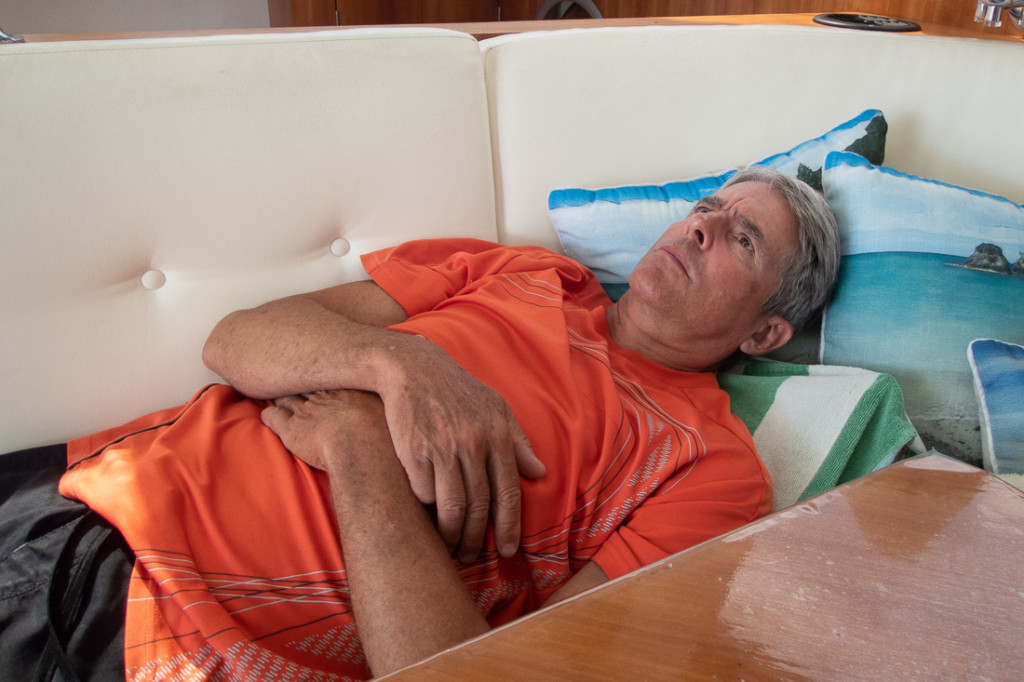
If Wallis had more to offer, we were determined to find it! More soon!

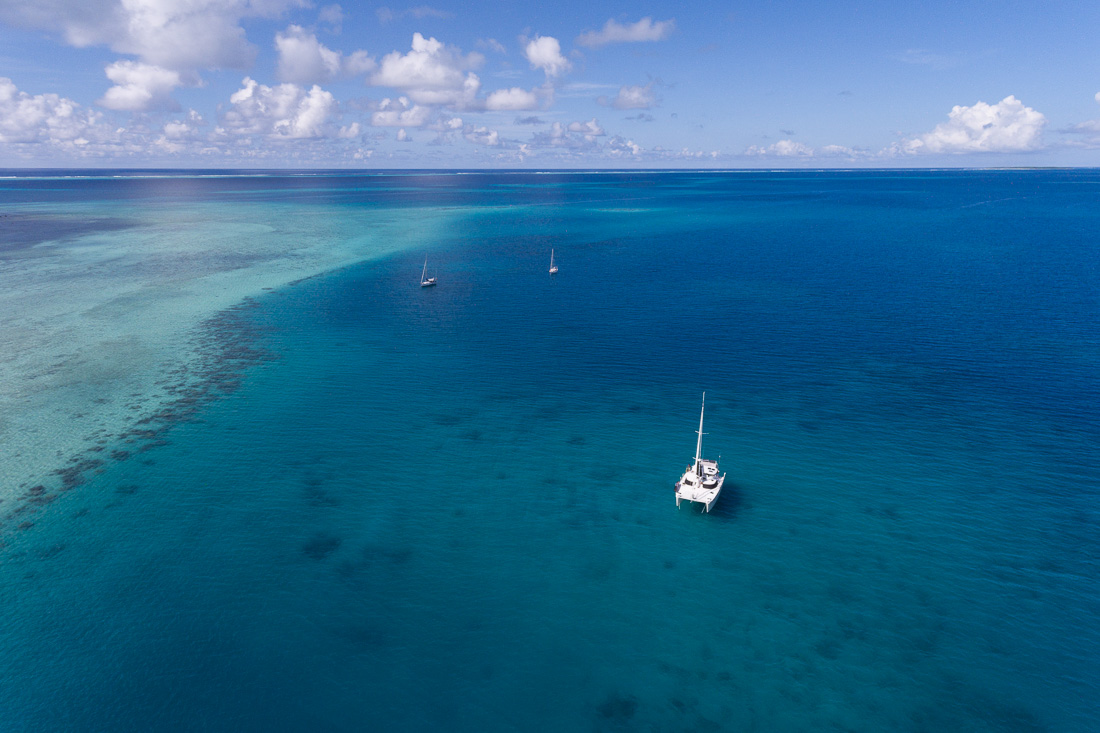
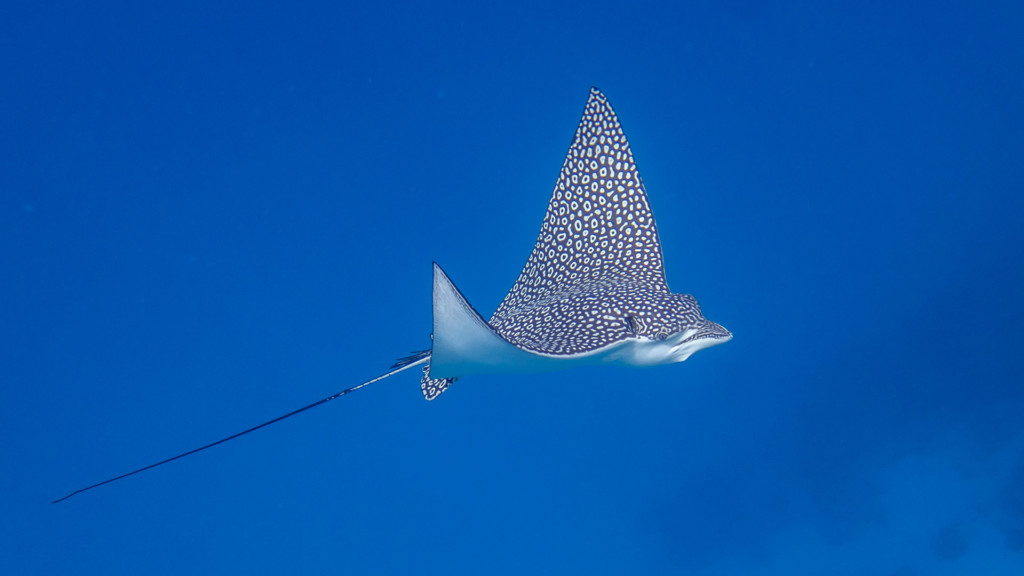

11 comments
Sounds like fun!! Good job finding the steering issue!! Miss seeing you guys!!!
Really enjoyed your trip report, when owning a boat you have to be able to multi task & carry lots of spare parts, on my catamaran we always had a spare transmission onboard, which helped on a couple of occasions in the Caribbean.
Haven’t commented in a bit. Glad to see you are still out in joying life. Love the info on your destinations. Sharon Burchell
That last picture!! HAHAHA
Looks gorgeous. We too are playing the hatch opening-and-closing game in Seychelles.
Great post. I really like getting some background on the places I read about in blog posts. It puts things into perspective and helps differentiate one beautiful beach from another. Love the storm cloud photos. It’s incredible how much the cost of living varies from one country in the South Pacific to another.
Enjoyed reading your post but I’m left wondering what was the quirky American cultural influence you mentioned? Let me know if you ever need a crew!
I will explain in an upcoming blog. Thanks for the offer of crew! Monty says you have a sailboat on Lake Superior.
Love the evolving story. Looks like some amazing weather and I loved your friend’s video of sailing thru the pumas 6″ deep.
Monty looks like he just needs a Dumb and Coke!
Hope you Dad and sister are safe in Halifax tonight!
OX Carol
Thanks, Carol! XOXO
Thank you for sharing the ‘nuts & bolts’ of your fascinating world.
I hope the weather improves soon. The leaves are turning golden here.
Thanks, Doris! Nice to hear from you!